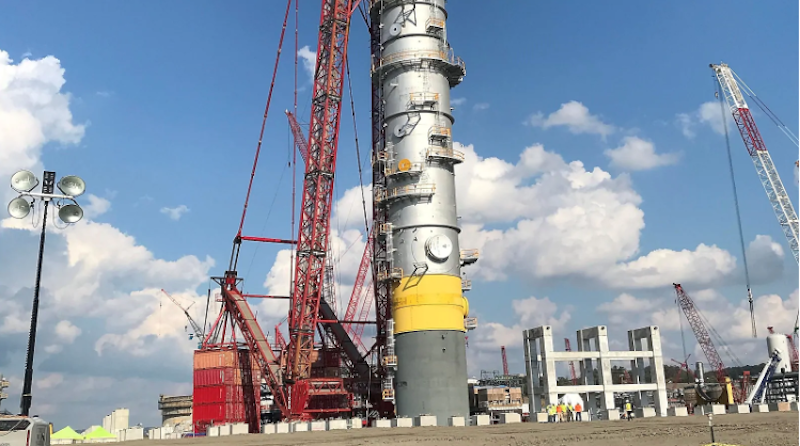A traditional measure of freight transportation production is the amount of volume moved, usually measured in weight or distance.
A combination of volume (weight) measured in tons and distance measured in miles is usually expressed as “ton-miles.” However, a ton-mile can be many things based on the combinations of the two, tons and miles. Take 100 ton miles. It could be 100 tons moved one mile or one ton moved 100 miles or any combination of the two that results in a product of 100 when multiplied.
The absence of similar weight-distance units makes transport comparisons difficult because of changing distances and weights. A similar issue exists for measures of the value of the transport being moved. The U.S. inland waterways system is not weight restricted and often has vertical and horizontal clearances that far exceed other modes of transport.
Consequently, the inland waterways are often ideal for the movement of oversized and overweight objects. Typically, large structures that are fabricated offsite by specialty firms such as oil and gas industry suppliers are moved by barge for inland delivery. The fabricated pieces are often modules, priced in the millions of dollars, that are shipped for final assembly into other components at refineries, chemical plants or other job sites.
A good example is Shell’s ethane cracker plant on the Ohio River at Monaca, Pa., about 25 miles northwest of Pittsburgh. It is being assembled with large fabricated components delivered by barge. If these modules could not be delivered by barge, they would have to be disassembled and shipped in smaller components for reassembly at the job site, which would increase costs and create quality control issues.
The importance of barge transportation in these cases has little to do with ton miles. Instead, it’s about the “value added” of moving large complex fully assembled fabricated pieces that are ready for job site assembly.
Editor’s note: This is Kevin Horn’s final Inland Insider column that appears in the December issue. After 19 years and 230 columns, he has decided to step away from his writing duties. We thank Kevin for his contribution to WorkBoat and wish him good luck in his “retirement.”




